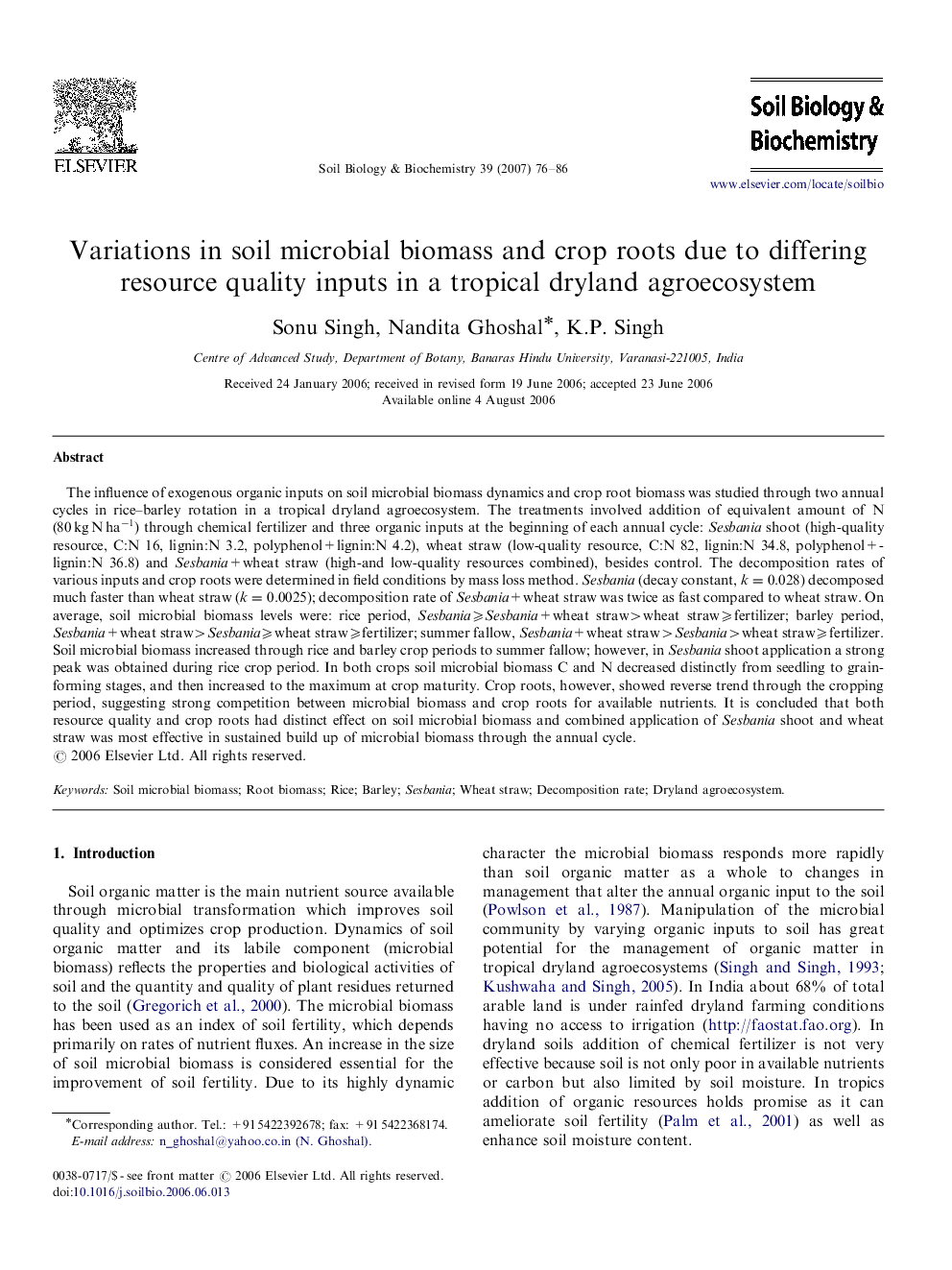| کد مقاله | کد نشریه | سال انتشار | مقاله انگلیسی | نسخه تمام متن |
|---|---|---|---|---|
| 2025867 | 1070012 | 2007 | 11 صفحه PDF | دانلود رایگان |

The influence of exogenous organic inputs on soil microbial biomass dynamics and crop root biomass was studied through two annual cycles in rice–barley rotation in a tropical dryland agroecosystem. The treatments involved addition of equivalent amount of N (80 kg N ha−1) through chemical fertilizer and three organic inputs at the beginning of each annual cycle: Sesbania shoot (high-quality resource, C:N 16, lignin:N 3.2, polyphenol+lignin:N 4.2), wheat straw (low-quality resource, C:N 82, lignin:N 34.8, polyphenol+lignin:N 36.8) and Sesbania+wheat straw (high-and low-quality resources combined), besides control. The decomposition rates of various inputs and crop roots were determined in field conditions by mass loss method. Sesbania (decay constant, k=0.028) decomposed much faster than wheat straw (k=0.0025); decomposition rate of Sesbania+wheat straw was twice as fast compared to wheat straw. On average, soil microbial biomass levels were: rice period, Sesbania⩾Sesbania+wheat straw>wheat straw⩾fertilizer; barley period, Sesbania+wheat straw>Sesbania⩾wheat straw⩾fertilizer; summer fallow, Sesbania+wheat straw>Sesbania>wheat straw⩾fertilizer. Soil microbial biomass increased through rice and barley crop periods to summer fallow; however, in Sesbania shoot application a strong peak was obtained during rice crop period. In both crops soil microbial biomass C and N decreased distinctly from seedling to grain-forming stages, and then increased to the maximum at crop maturity. Crop roots, however, showed reverse trend through the cropping period, suggesting strong competition between microbial biomass and crop roots for available nutrients. It is concluded that both resource quality and crop roots had distinct effect on soil microbial biomass and combined application of Sesbania shoot and wheat straw was most effective in sustained build up of microbial biomass through the annual cycle.
Journal: Soil Biology and Biochemistry - Volume 39, Issue 1, January 2007, Pages 76–86